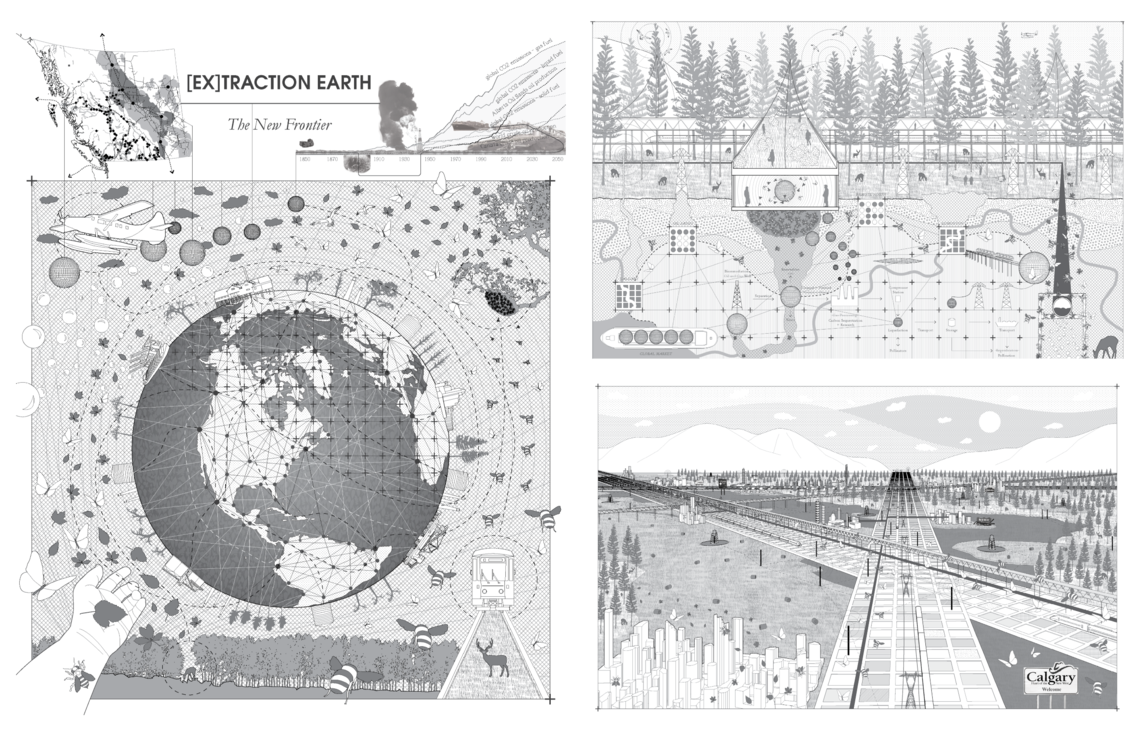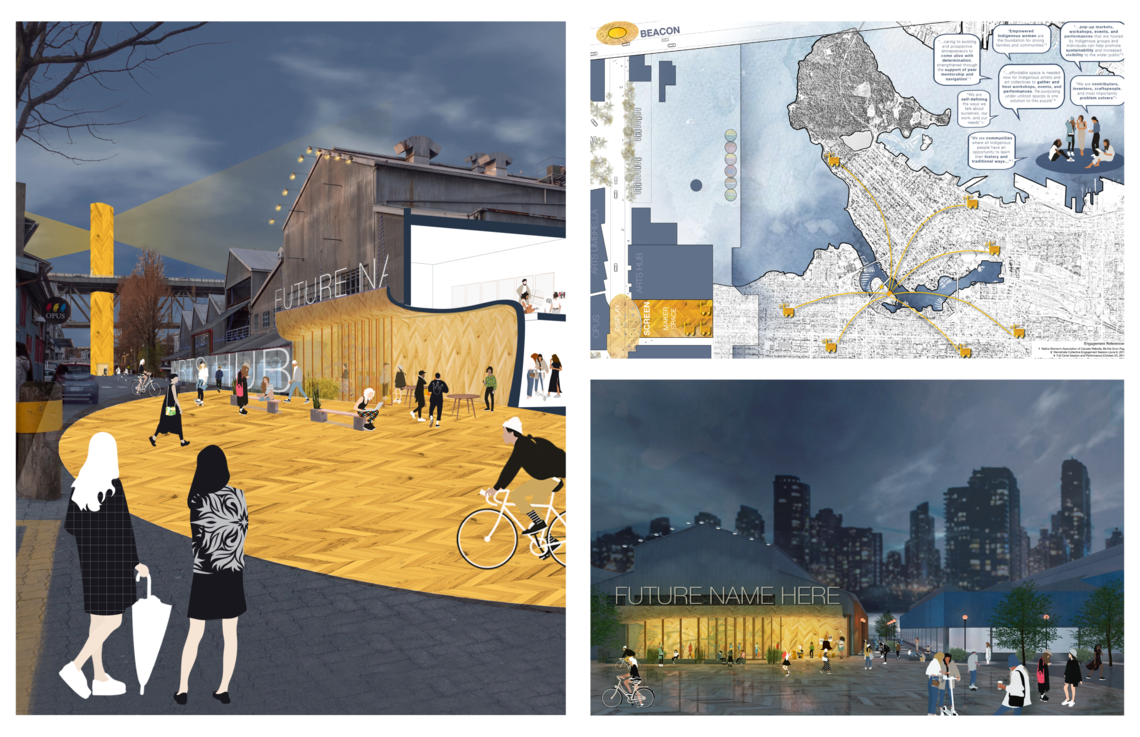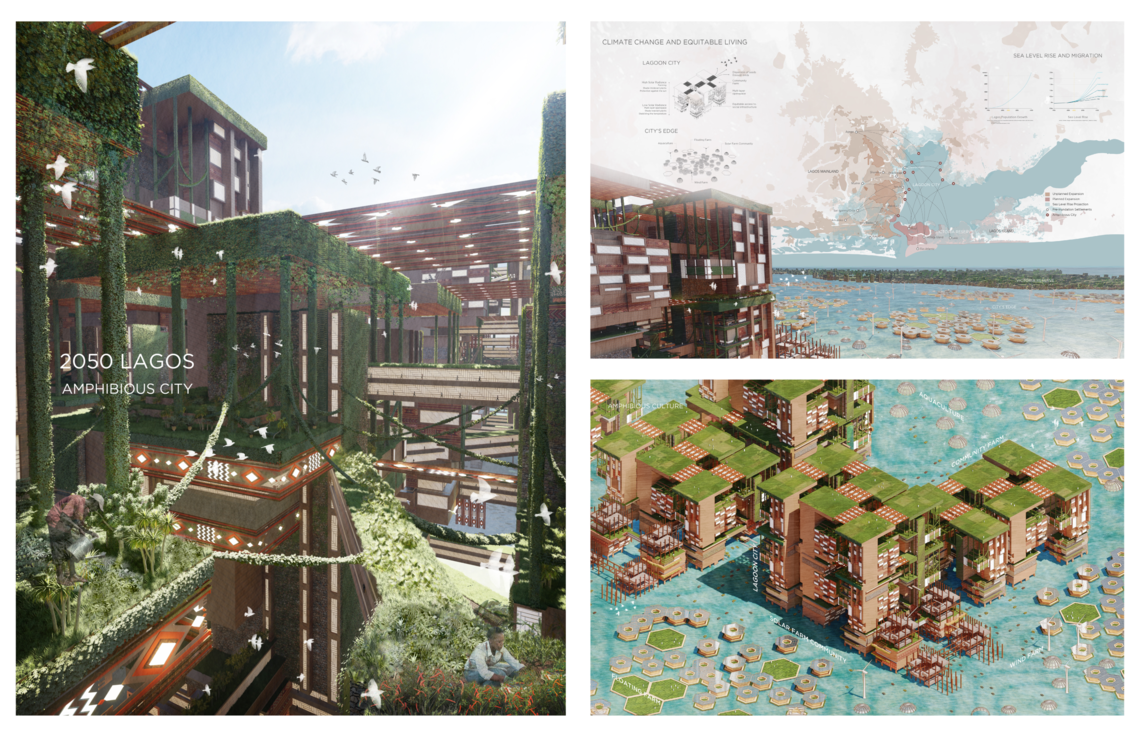March 10, 2021
Design competition invites the world to reimagine inclusive, equitable ‘City for All’

Architecture has the capacity to improve people's conditions, no matter what the pressures are.
- Shelley McNamara, competition juror, Pritzker Prize winner 2020
If given a blank slate, how might designers draw from the pressing problems of today — equity, environment and wellness — to create inclusive cities for all?
Last summer, the School of Architecture, Planning and Landscape (SAPL) — along with the rest of the world — was confronted by a global pandemic and a public outcry for social justice to address historic racial inequities. “As a design school, we were wrestling with ideas about how designers could be leaders and activists for change. While at the same time our broader university community was asking some of the same questions: about how to be a force for change in diversity, sustainability, and human scale connectivity at a city level,” describes Dr. John Brown, SAPL dean.
Out of this wrestling emerged an idea: to extend our local platform into a global one by making space for designers and planners to experiment with identifying and solving urgent global issues.
That concept morphed into a design ideas competition: CBDX: CITIES FOR ALL competition, representing the collision between world events and a worldwide movement for social change.
The competition launched in October 2020 with a prestigious international jury and ambitious new SAPL professor, Alberto de Salvatierra, as inaugural faculty lead and jury chair. At the end of the submission period, the competition had received 145 entries from 108 cities around the globe, with entries from as far as Cameroon, Sudan and Togo.
The design proposals addressed a wide range of themes, like Social Housing, COVID-19, Social Justice, Sustainability, Isolation and Food Security, confirming that no matter where in the world they were located, people were grappling with similar challenges.
As de Salvatierra explains, "Cities — which often ossify systemic inequities through the built environment — have become the fulcrum upon which movements for equity and justice have found increasing leverage. Solutions must come from, and be for, everyone. This competition provided a platform to highlight how architects and designers might address underrepresented and marginalized voices."
At the winners’ announcement Feb. 10, more than 300 people from across the world gathered virtually via Zoom to hear the jury speak about the competition entries. Some of the most interesting design proposals include:
Jesse Martyn, proposed an alternate use for Canada’s carbon corridor: creating a super energy grid across the landscape that couples the natural environment with infrastructure. Fields within the grid are dedicated to agricultural production, pollination and wildlife incubators that feed natural ecosystems and fuel a network of high-speed trains.

Extraction Earth: The New Frontier
Jesse Martyn
Keri Goodlad and Xuut’a K’ii Brett MacIntyre created a proposal that supports urban Indigenous women entrepreneurs typically underrepresented in discussions about Indigenous business development. Their design features a central hub that serves as a base of operations with small pop-up shops, made recognizable through two primary design elements, woven into the fabric of the city.

Future Name Here
Keri Goodlad and Xuut’a K’ii Brett MacIntyre
Gi Chul Choe and Joanne Li created a new Lagoon City along the interior coastline of Nigeria that incorporates vertical housing complexes with rooftop farms to ensure equitable housing and food security for both displaced and existing populations under climate change and the pandemic.

2050 Lagos Amphibious City
Gi Chul Choe and Joanne Li
There was a sobering, yet hopeful quality to the entries that Shelly McNamara, juror and 2020 Pritzker Prize winner, noted in her remarks. “Architecture is by its nature, optimistic. We're always imagining new worlds, so we can't but be optimistic [This is] a difficult time, but it's also a time of opportunity that we turn the negatives into a positive. We were not a perfect society before the pandemic, but maybe we can make it a little bit more just, and democratic post pandemic.”
An exhibition of the top entries — three winners, 15 honourable mentions and 26 finalists — is on display until April 30 online and downtown at the City Building Design Lab (corner of Macleod Trail and 6 Avenue), and City Hall. Entries will also be published in the inaugural annual volume later this year. The next CBDX Competition will launch on March 21.
The CBDX Series is made possible through the generosity of Stantec, a global design and delivery firm.
For news and updates, follow @cbdxseries on Instagram.








